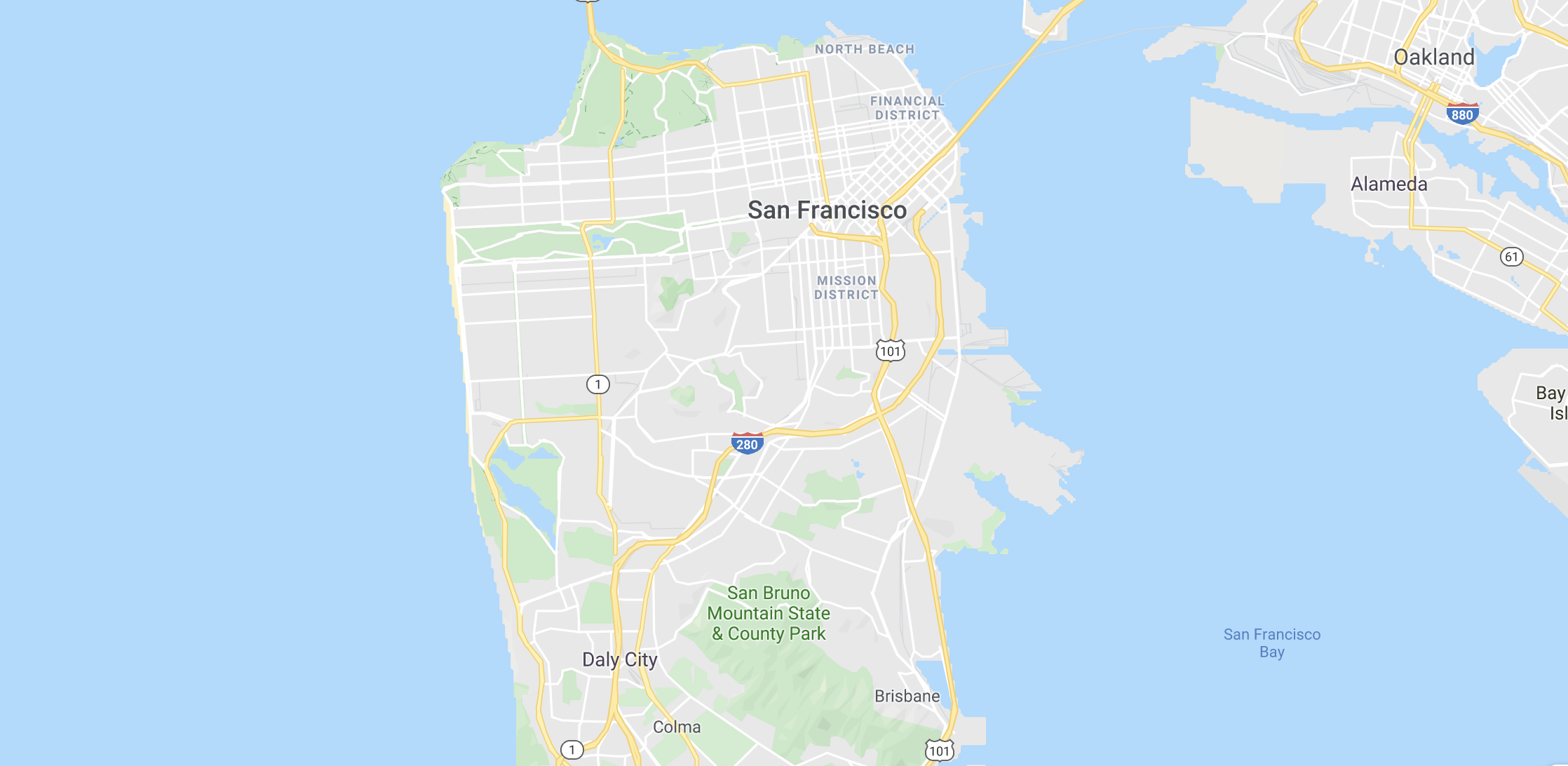Too many people in SaaS are basing their pricing strategy on what they think people “should” be willing to pay.
And funnily enough, too many people in SaaS are struggling to find the right price point to attract the right kind of customers.
Do you think this might be related?
By developing a pricing analytics strategy to determine with confidence which customers you should be going after at each product tier, you can drastically improve your knowledge about your growth potential.
What Are Pricing Analytics?
Too many people in SaaS are basing their pricing models on what they think people “should” be willing to pay.
And funnily enough, too many people in SaaS are struggling to find the right price point to attract the right kind of customers.
Do you think this might be related?
By developing a pricing analytics strategy to determine with confidence which customers you should be going after at each product tier, you can drastically improve your growth potential and pricing decisions.
Your Customers Are Not Monolithic
Think about all the demographics that could be interested in your product. Start with size: freelancers, tiny offices with a few employees, small businesses. Then by industry: video production, insurance, auto dealerships, produce farms.
Gathering this data, organizing it, and segmenting it into different groups in different ways should immediately shed light on some patterns that exist. Your next step is to take advantage of those patterns and use them for future decision-making.
Although some companies, like Basecamp, have decided to focus on just one plan for unlimited usage without any customer segmentation, they’re an outlier and are likely putting extra attention on marketing and support to be able to treat each customer the same. In general, you want to have price elasticity to offer lower-demand customers lower price points, as well as vice versa.
Value-Based Pricing
Experts tend to agree that the best pricing is “value-based,” meaning that it directly relates to what value you’re bringing to your client.
If you’re selling payroll management software, for instance, think about how long it would take to do the same tasks with a different solution like Excel. Then calculate the average hourly wage of the payroll specialist doing that task, multiplied by how many hours a month are spent doing it.
Let’s say your analysis comes up with a savings of $200 a month in labor costs. 10X is the industry standard for value created vs price charged, so a $20/month tier sounds perfect!
Can You Rely on Freemium?
Here is a great case study.
Zoom gives away free meetings limited by total time, host numbers, and participant numbers. 55% of Zoom’s current customers generating more than six figures in annual revenue started as free members.
And as it happens, they’re one of only a handful of companies successfully closing enterprise contracts with a free product tier.
Businesses who like a certain product are going to tend to try to shape their own needs around the limitations of the free tier and end up costing you money over time. If the only criteria for Zoom tiers was meeting length, for instance, they might end up actively trying to make their meetings shorter and more frequent instead of longer.
However, what Zoom has done to stand out is create different incentives based on usage, seats, and features so that enterprises are ever so slightly hampered by the limitations on the free product.
In other words, you should think about the paths that your customers have to making an upgrade in real-time. Are there more use cases that could be incentives for making the plunge to a higher tier? That’s the advanced analytics you’ll want to be digging for.
The Effect of Pricing Analysis
PriceIntelligently did a massive survey on SaaS pricing and found that among companies with ARR greater than $5 million, the companies that continually analyzed and refined their pricing tended to be the most efficient by far.
And that makes logical sense. Your industry, whatever it is, probably looks a whole lot different today than it did even ten years ago. Even putting aside dollar amounts, and even for a successful company, failing to develop new product tiers or levels of service is likely to have seriously impacted growth in that time.
By the way, if you’re not disclosing your pricing publicly, there’s no need to stick to a rigid formula. In the enterprise space especially, people tend to have several more pricing tiers than what they advertise for non-enterprise customers. That helps them tweak the plan for a perfect price and value balance for everybody involved.
Improve Your Profitability with Pricing Analytics
There are two main paths that companies tend to follow as they develop price changes that fit their growth and customers better.
In the first scenario, imagine that you’re bleeding money with support costs for customers who just aren’t bringing enough value in to the business. At that point, you can either triple the price point to shed customers at the low end, or shut out support to customers at lower product tiers.
Your logo churn will rise as your revenue churn lowers, counteracting the costs of dropping so many accounts.
Or the opposite could be your problem: your price point is high enough that you can stay solid with only a few customers, but it’s too high to even get those. By lowering the price point and moving downmarket, you can decrease logo churn at the expense of increasing revenue churn slightly.
Analytics Solutions: The #1 Pricing Analytics Tool
To get started with your strategic pricing plan, you might want to take Salesforce for a spin. It’s the #1 go-to CRM tool for SaaS businesses looking for an all-in-one data dashboard. You can take advantage of their free trial and talk to their support team to discuss which features you can leverage for your specific pricing analytics goals.
Ways to Optimize Pricing Value
It’s always easier to increase revenues from existing customers than it is to acquire new ones. People know your product and, ideally, they’ve got a good relationship with your client services team.
But if the growth they’re able to experience because of your product has been exploding, then you’re undercharging them. That’s why it’s dangerous to offer unlimited-scaling plans – always scale with usage to match the demands on your backend. Arpit Rai wrote more about value metrics in a Medium post here.
If you’re looking for data sources for better price optimization, we compiled pricing analytics from 53 SaaS companies…
53 Examples of Pricing Analytics Data From Private SaaS Businesses
| Living Security has a gross revenue churn of 1%, an expansion revenue of 312%, for net revenue retention annually of 411%. The company is paying $12000 to acquire customers that start off paying $24000 per year. This means their payback period is 10 months. Source Here: getlatka.com/companies/living-security |
| Reveleer has a gross revenue churn of 10%, an expansion revenue of 150%, for net revenue retention annually of 240%. The company is paying $75000 to acquire customers that start off paying $274800 per year. This means their payback period is 10 months. Source Here: getlatka.com/companies/reveleer |
| Tuuk has a gross revenue churn of 0%, an expansion revenue of 100%, for net revenue retention annually of 200%. The company is paying $700 to acquire customers that start off paying $180000 per year. This means their payback period is 10 months. Source Here: getlatka.com/companies/tuuk |
| Screencloud has a gross revenue churn of 36%, an expansion revenue of 104%, for net revenue retention annually of 168%. The company is paying $300 to acquire customers that start off paying $696 per year. This means their payback period is 10 months. Source Here: getlatka.com/companies/screencloud |
| Getoccasion has a gross revenue churn of 10%, an expansion revenue of 75%, for net revenue retention annually of 165%. The company is paying $350 to acquire customers that start off paying $720 per year. This means their payback period is 10 months. Source Here: getlatka.com/companies/getoccasion |
| Cloudcheckr has a gross revenue churn of 4%, an expansion revenue of 49%, for net revenue retention annually of 145%. The company is paying $18000 to acquire customers that start off paying $24000 per year. This means their payback period is 10 months. Source Here: getlatka.com/companies/cloudcheckr |
| Neoreach has a gross revenue churn of 20%, an expansion revenue of 40%, for net revenue retention annually of 120%. The company is paying $110000 to acquire customers that start off paying $120000 per year. This means their payback period is 10 months. Source Here: getlatka.com/companies/neoreach |
| Rifiniti has a gross revenue churn of 3%, an expansion revenue of 20%, for net revenue retention annually of 117%. The company is paying $20000 to acquire customers that start off paying $150000 per year. This means their payback period is 10 months. Source Here: getlatka.com/companies/rifiniti |
| Branch has a gross revenue churn of 5%, an expansion revenue of 20%, for net revenue retention annually of 115%. The company is paying $ to acquire customers that start off paying $79200 per year. This means their payback period is 10 months. Source Here: getlatka.com/companies/branch |
| Happyco has a gross revenue churn of 10%, an expansion revenue of 22%, for net revenue retention annually of 112%. The company is paying $6000 to acquire customers that start off paying $6000 per year. This means their payback period is 10 months. Source Here: getlatka.com/companies/happyco |
| Socialtables has a gross revenue churn of 5%, an expansion revenue of 10%, for net revenue retention annually of 105%. The company is paying $7000 to acquire customers that start off paying $4000 per year. This means their payback period is 10 months. Source Here: getlatka.com/companies/socialtables |
| Passkit has a gross revenue churn of 9%, an expansion revenue of 13%, for net revenue retention annually of 104%. The company is paying $1500 to acquire customers that start off paying $2160 per year. This means their payback period is 10 months. Source Here: getlatka.com/companies/passkit |
| Bynder has a gross revenue churn of 7%, an expansion revenue of 11%, for net revenue retention annually of 104%. The company is paying $30000 to acquire customers that start off paying $30000 per year. This means their payback period is 10 months. Source Here: getlatka.com/companies/bynder |
| Actito has a gross revenue churn of 7%, an expansion revenue of 10%, for net revenue retention annually of 103%. The company is paying $30000 to acquire customers that start off paying $50000 per year. This means their payback period is 10 months. Source Here: getlatka.com/companies/actito |
| Livehelpnow has a gross revenue churn of 2%, an expansion revenue of 4%, for net revenue retention annually of 102%. The company is paying $250 to acquire customers that start off paying $609 per year. This means their payback period is 10 months. Source Here: getlatka.com/companies/livehelpnow |
| Monday has a gross revenue churn of 24%, an expansion revenue of 26%, for net revenue retention annually of 102%. The company is paying $800 to acquire customers that start off paying $864 per year. This means their payback period is 10 months. Source Here: getlatka.com/companies/monday |
| CrowdStreet has a gross revenue churn of 4%, an expansion revenue of 5%, for net revenue retention annually of 101%. The company is paying $10000 to acquire customers that start off paying $24000 per year. This means their payback period is 10 months. Source Here: getlatka.com/companies/crowdstreet |
| Supermetrics has a gross revenue churn of 12%, an expansion revenue of 13%, for net revenue retention annually of 101%. The company is paying $400 to acquire customers that start off paying $1200 per year. This means their payback period is 10 months. Source Here: getlatka.com/companies/supermetrics |
| Functionize has a gross revenue churn of 20%, an expansion revenue of 20%, for net revenue retention annually of 100%. The company is paying $40000 to acquire customers that start off paying $60000 per year. This means their payback period is 10 months. Source Here: getlatka.com/companies/functionize |
| Simplyinsight has a gross revenue churn of 0%, an expansion revenue of 0%, for net revenue retention annually of 100%. The company is paying $4000 to acquire customers that start off paying $30000 per year. This means their payback period is 10 months. Source Here: getlatka.com/companies/simplyinsight |
| Giraffe360 has a gross revenue churn of 0%, an expansion revenue of 0%, for net revenue retention annually of 100%. The company is paying $0 to acquire customers that start off paying $16800 per year. This means their payback period is 10 months. Source Here: getlatka.com/companies/giraffe360 |
| Priceintelligently has a gross revenue churn of 0%, an expansion revenue of 0%, for net revenue retention annually of 100%. The company is paying $2000 to acquire customers that start off paying $13333 per year. This means their payback period is 10 months. Source Here: getlatka.com/companies/priceintelligently |
| Idronect has a gross revenue churn of 0%, an expansion revenue of 0%, for net revenue retention annually of 100%. The company is paying $40 to acquire customers that start off paying $288 per year. This means their payback period is 10 months. Source Here: getlatka.com/companies/idronect |
| Socialflow has a gross revenue churn of 10%, an expansion revenue of 10%, for net revenue retention annually of 100%. The company is paying $16667 to acquire customers that start off paying $50000 per year. This means their payback period is 10 months. Source Here: getlatka.com/companies/socialflow |
| Webpt has a gross revenue churn of 0%, an expansion revenue of 0%, for net revenue retention annually of 100%. The company is paying $2100 to acquire customers that start off paying $4200 per year. This means their payback period is 10 months. Source Here: getlatka.com/companies/webpt |
| Maropost has a gross revenue churn of 0%, an expansion revenue of 0%, for net revenue retention annually of 100%. The company is paying $5000 to acquire customers that start off paying $96000 per year. This means their payback period is 10 months. Source Here: getlatka.com/companies/maropost |
| IamIP has a gross revenue churn of 1%, an expansion revenue of 0%, for net revenue retention annually of 99%. The company is paying $3000 to acquire customers that start off paying $9600 per year. This means their payback period is 10 months. Source Here: getlatka.com/companies/iamip |
| Verticaliq has a gross revenue churn of 1%, an expansion revenue of 0%, for net revenue retention annually of 99%. The company is paying $10000 to acquire customers that start off paying $15000 per year. This means their payback period is 10 months. Source Here: getlatka.com/companies/verticaliq |
| Storeautomator has a gross revenue churn of 2%, an expansion revenue of 0%, for net revenue retention annually of 98%. The company is paying $100 to acquire customers that start off paying $1200 per year. This means their payback period is 10 months. Source Here: getlatka.com/companies/storeautomator |
| Sococo has a gross revenue churn of 8%, an expansion revenue of 0%, for net revenue retention annually of 92%. The company is paying $9750 to acquire customers that start off paying $9000 per year. This means their payback period is 10 months. Source Here: getlatka.com/companies/sococo |
| Salecycle has a gross revenue churn of 9%, an expansion revenue of 0%, for net revenue retention annually of 91%. The company is paying $30000 to acquire customers that start off paying $60000 per year. This means their payback period is 10 months. Source Here: getlatka.com/companies/salecycle |
| FusionAuth has a gross revenue churn of 10%, an expansion revenue of 0%, for net revenue retention annually of 90%. The company is paying $12000 to acquire customers that start off paying $6000 per year. This means their payback period is 10 months. Source Here: getlatka.com/companies/fusionauth |
| Cogsworth has a gross revenue churn of 10%, an expansion revenue of 0%, for net revenue retention annually of 90%. The company is paying $20 to acquire customers that start off paying $108 per year. This means their payback period is 10 months. Source Here: getlatka.com/companies/cogsworth |
| Businesshangouts has a gross revenue churn of 12%, an expansion revenue of 0%, for net revenue retention annually of 88%. The company is paying $30 to acquire customers that start off paying $840 per year. This means their payback period is 10 months. Source Here: getlatka.com/companies/businesshangouts |
| Datanyze has a gross revenue churn of 12%, an expansion revenue of 0%, for net revenue retention annually of 88%. The company is paying $9000 to acquire customers that start off paying $12000 per year. This means their payback period is 10 months. Source Here: getlatka.com/companies/datanyze |
| Artesian has a gross revenue churn of 12%, an expansion revenue of 0%, for net revenue retention annually of 88%. The company is paying $60000 to acquire customers that start off paying $70000 per year. This means their payback period is 10 months. Source Here: getlatka.com/companies/artesian |
| Kvsocial has a gross revenue churn of 12%, an expansion revenue of 0%, for net revenue retention annually of 88%. The company is paying $140 to acquire customers that start off paying $840 per year. This means their payback period is 10 months. Source Here: getlatka.com/companies/kvsocial |
| Elastic has a gross revenue churn of 12%, an expansion revenue of 0%, for net revenue retention annually of 88%. The company is paying $10000 to acquire customers that start off paying $12000 per year. This means their payback period is 10 months. Source Here: getlatka.com/companies/elastic |
| Marketmuse has a gross revenue churn of 12%, an expansion revenue of 0%, for net revenue retention annually of 88%. The company is paying $9000 to acquire customers that start off paying $42000 per year. This means their payback period is 10 months. Source Here: getlatka.com/companies/marketmuse |
| Knowbe4 has a gross revenue churn of 14%, an expansion revenue of 0%, for net revenue retention annually of 86%. The company is paying $2600 to acquire customers that start off paying $6316 per year. This means their payback period is 10 months. Source Here: getlatka.com/companies/knowbe4 |
| Prezly has a gross revenue churn of 14%, an expansion revenue of 0%, for net revenue retention annually of 86%. The company is paying $7000 to acquire customers that start off paying $10800 per year. This means their payback period is 10 months. Source Here: getlatka.com/companies/prezly |
| Vyrill has a gross revenue churn of 15%, an expansion revenue of 0%, for net revenue retention annually of 85%. The company is paying $2000 to acquire customers that start off paying $24000 per year. This means their payback period is 10 months. Source Here: getlatka.com/companies/vyrill |
| Vindi has a gross revenue churn of 16%, an expansion revenue of 0%, for net revenue retention annually of 84%. The company is paying $700 to acquire customers that start off paying $1200 per year. This means their payback period is 10 months. Source Here: getlatka.com/companies/vindi |
| Act has a gross revenue churn of 16%, an expansion revenue of 0%, for net revenue retention annually of 84%. The company is paying $100 to acquire customers that start off paying $1059 per year. This means their payback period is 10 months. Source Here: getlatka.com/companies/act |
| Authenticating has a gross revenue churn of 40%, an expansion revenue of 0%, for net revenue retention annually of 60%. The company is paying $0 to acquire customers that start off paying $12000 per year. This means their payback period is 10 months. Source Here: getlatka.com/companies/authenticating |
| Slidebean has a gross revenue churn of 42%, an expansion revenue of 0%, for net revenue retention annually of 58%. The company is paying $150 to acquire customers that start off paying $588 per year. This means their payback period is 10 months. Source Here: getlatka.com/companies/slidebean |
| Purechat has a gross revenue churn of 42%, an expansion revenue of 0%, for net revenue retention annually of 58%. The company is paying $600 to acquire customers that start off paying $315 per year. This means their payback period is 10 months. Source Here: getlatka.com/companies/purechat |
| Whatagraph has a gross revenue churn of 48%, an expansion revenue of 0%, for net revenue retention annually of 52%. The company is paying $60 to acquire customers that start off paying $240 per year. This means their payback period is 10 months. Source Here: getlatka.com/companies/whatagraph |
| Fuelpanda has a gross revenue churn of 48%, an expansion revenue of 0%, for net revenue retention annually of 52%. The company is paying $5 to acquire customers that start off paying $720 per year. This means their payback period is 10 months. Source Here: getlatka.com/companies/fuelpanda |
| Pandadoc has a gross revenue churn of 60%, an expansion revenue of 0%, for net revenue retention annually of 40%. The company is paying $1200 to acquire customers that start off paying $1200 per year. This means their payback period is 10 months. Source Here: getlatka.com/companies/pandadoc |
| Appointlet has a gross revenue churn of 60%, an expansion revenue of 0%, for net revenue retention annually of 40%. The company is paying $120 to acquire customers that start off paying $404 per year. This means their payback period is 10 months. Source Here: getlatka.com/companies/appointlet |
| Parkbench has a gross revenue churn of 60%, an expansion revenue of 0%, for net revenue retention annually of 40%. The company is paying $400 to acquire customers that start off paying $3740 per year. This means their payback period is 10 months. Source Here: getlatka.com/companies/parkbench |
| Ripl has a gross revenue churn of 70%, an expansion revenue of 0%, for net revenue retention annually of 30%. The company is paying $40 to acquire customers that start off paying $144 per year. This means their payback period is 10 months. Source Here: getlatka.com/companies/ripl |
| Instapage has a gross revenue churn of 72%, an expansion revenue of 0%, for net revenue retention annually of 28%. The company is paying $360 to acquire customers that start off paying $1200 per year. This means their payback period is 10 months. Source Here: getlatka.com/companies/instapage |
Conclusion
The first step you can take for your next pricing analysis is to gather and organize every metric you can. Willingness to pay by demographic group. Customer lifetime value vs Customer Acquisition Cost. Average revenue per user.
And the first time you gather this data all in one place, you probably won’t see many patterns. You’ll need to pull historical trends over time too.
The landmarks that you can identify – a peak in demand for small businesses with three-month subscriptions, for instance – can let you know if you’re accidentally offering something for way under market value (at a cost to your bottom line) or overcharging and bleeding out logos who hit that tier.
Whichever it is, even solving one of those problems is enough to justify strong pricing analytics.
Author:
Yassir Sahnoun is the founder of YassirSahnoun.com. He helps SaaS companies like Castbox and FluentU attract sales using content strategy, copywriting, blogging, email marketing, & more. If you want to up your content marketing game, you can schedule a free discovery call with Yassir by clicking here.











